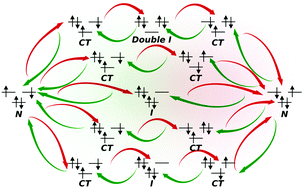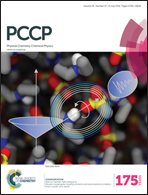Highly efficient perturbative + variational strategy based on orthogonal valence bond theory for the evaluation of magnetic coupling constants. Application to the trinuclear Cu(ii) site of multicopper oxidases†
Abstract
A new strategy based on orthogonal valence-bond analysis of the wave function combined with intermediate Hamiltonian theory has been applied to the evaluation of the magnetic coupling constants in two AF systems. This approach provides both a quantitative estimate of the J value and a detailed analysis of the main physical mechanisms controlling the coupling, using a combined perturbative + variational scheme. The procedure requires a selection of the dominant excitations to be treated variationally. Two methods have been employed: a brute-force selection, using a logic similar to that of the CIPSI approach, or entanglement measures, which identify the most interacting orbitals in the system. Once a reduced set of excitations (about 300 determinants) is established, the interaction matrix is dressed at the second-order of perturbation by the remaining excitations of the CI space. The diagonalization of the dressed matrix provides J values in good agreement with experimental ones, at a very low-cost. This approach demonstrates the key role of d → d* excitations in the quantitative description of the magnetic coupling, as well as the importance of using an extended active space, including the bridging ligand orbitals, for the binuclear model of the intermediates of multicopper oxidases. The method is a promising tool for dealing with complex systems containing several active centers, as an alternative to both pure variational and DFT approaches.


 Please wait while we load your content...
Please wait while we load your content...